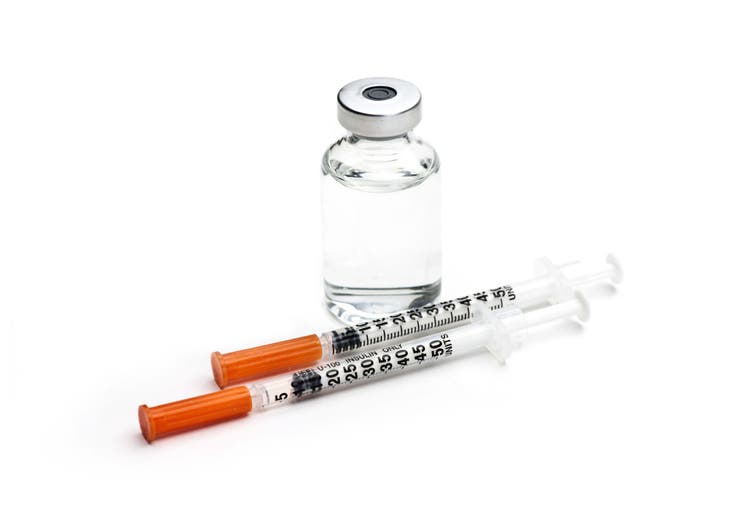
How to Convert U-100 Insulin in Units to Milliliters
Insulin is an injectable medication used to treat diabetes mellitus in dogs, cats, and other animal species. It is available in a variety of types and strengths. There are also different sizes of insulin syringes that are made to go with the varying types of insulin.
KEY POINT: There are different types of insulin syringes. It is critical to match the correct syringe with the accompanying type of insulin to administer an accurate dose.
Insulin is available in different concentrations—U-100, U-40, and U-500—because patients (both human and veterinary) have varying needs for insulin therapy. The "U" number refers to the number of insulin units per milliliter of fluid; for example, U-100 means 100 units per mL.
U-100 is the most commonly used strength in human medicine due to its balance of potency and convenience, and it's frequently prescribed in veterinary settings as well. However, confusion can arise when different syringe types or insulin concentrations are used interchangeably.
Using the wrong syringe or failing to convert units properly can result in serious dosing errors—either giving too little insulin (risking poor blood sugar control) or too much (causing dangerous hypoglycemia).
Therefore, it's critical to understand the concentration of insulin being used and ensure that the dosage is measured correctly using the appropriate tools or conversion formulas.
There may be instances where you are unable to match your syringe and insulin type, due to lack of availability or an emergency. This article is designed to help pet owners accurately convert insulin units to ml.
Quick Answer: To convert U-100 insulin units to milliliters, divide the number of units by 100, since U-100 insulin contains 100 units per milliliter. For example, 30 units of U-100 insulin equal 0.3 mL (30 ÷ 100 = 0.3 mL).
Understanding Insulin Strengths
Common strengths of insulin used in dogs and cats are referred to as U-100 or U-40. “U” stands for unit. The numbers 40 or 100 refer to how much insulin (the number of units) is in a set volume of fluid – which, in this case, is one milliliter (1 ml) [referred to as units per ml]. For example, U-100 insulin has 100 units per milliliter and U-40 has 40 units per milliliter.
KEY POINT: Some insulin syringes have more than 2 ½ times the units of insulin per ml.
- U-100 syringes hold 100 units per milliliter
- U-40 syringes hold 40 units per milliliter
It is possible to use a 1 ml (commonly referred to as a TB syringe) for insulin.
Examples of Insulins:
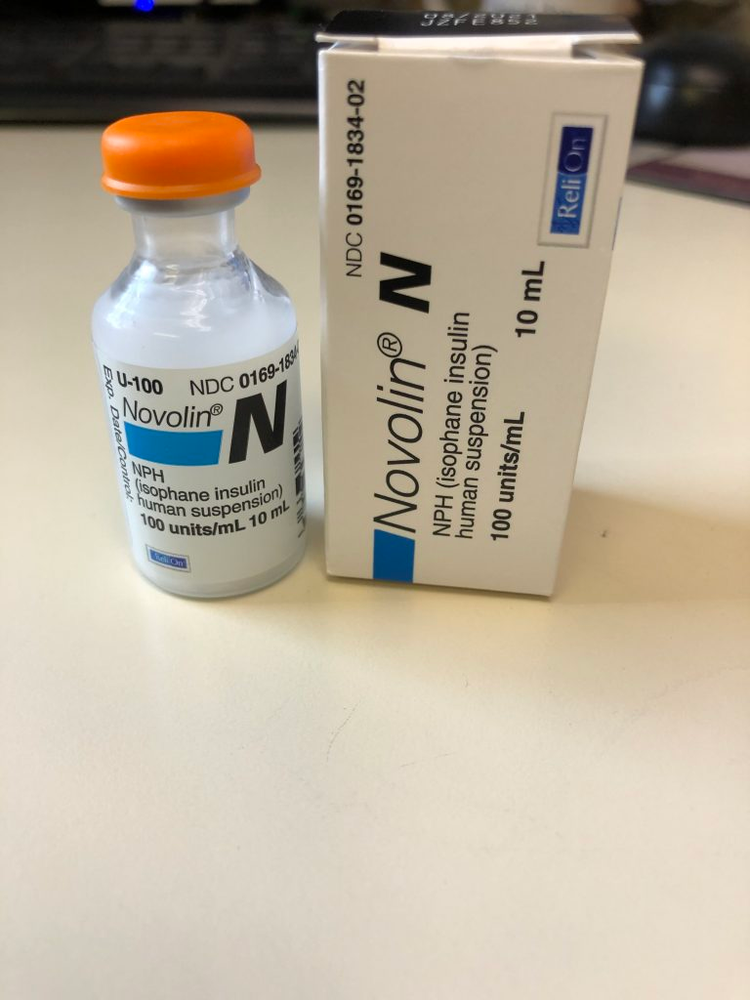
Notice that the label on the bottle and box indicates that this insulin is 100 units/ml.
- Examples of U-100 insulin are Humulin R U-100, Lantus®, Humulin N, Novolin® N, Relion®, and Humalog® U-100.
- Examples of U-40 insulin are Vetsulin® and ProZinc®.
So, U-100 insulin is more concentrated. There is essentially 2 ½ times more insulin in a milliliter than there is in U-40 insulin.
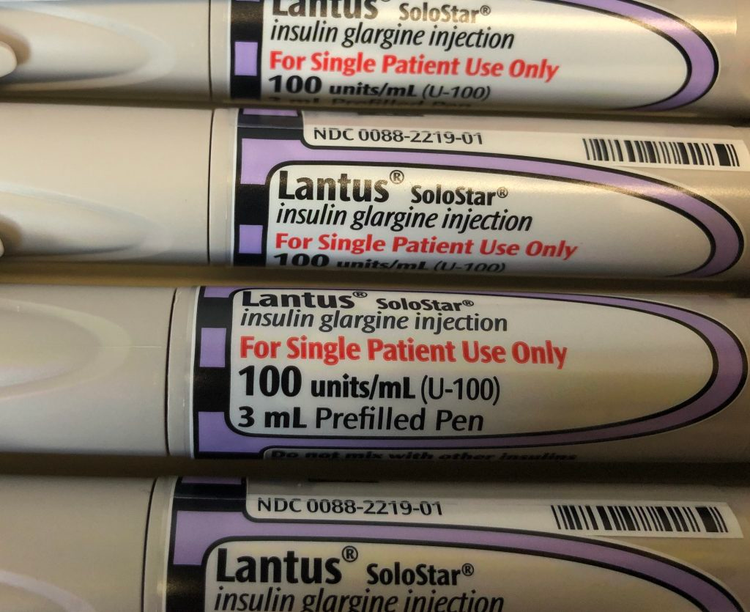
It is critical to use a U-100 insulin syringe for accurate dosing.
NOTE: Always look at the bottle to double check the strength of your insulin. There are new insulins on the market that are U-300 and U-500, which are used in humans, but are not commonly used in dogs and cats.
Understanding Insulin Syringes
To go with the different types of insulin, there are different syringes, including U-40 syringes and U-100 syringes. It is important to use the right syringe with the right insulin to achieve the correct dosage. Your veterinarian should prescribe syringes and insulin that match. The bottle and the syringes should each indicate if they are U-100 or U-40. Again, make sure they match.
It is possible to “convert” and mix and match the insulin syringes. It is generally not recommended because it can lead to deadly mistakes.
- One unit of U-40 insulin is 0.025 ml in a regular syringe.
- One unit of U-100 insulin is 0.01 ml in a regular syringe.
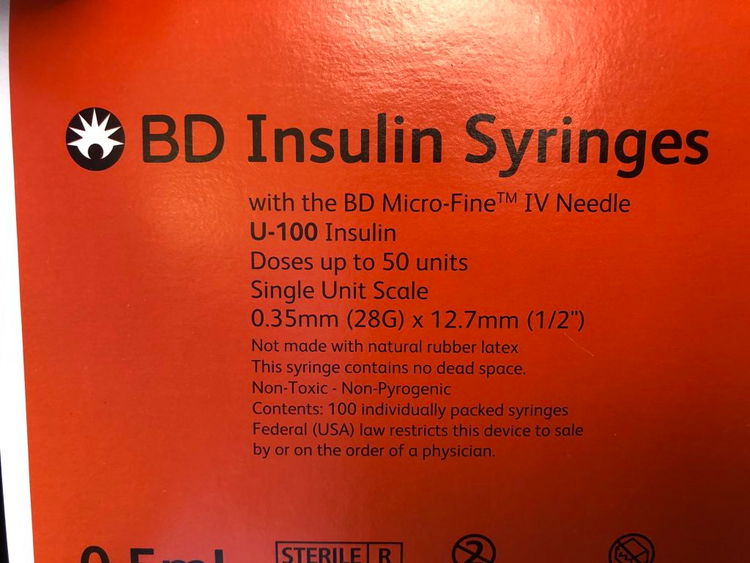
Observe that the package clearly shows that it is a U-100 syringe. This particular syringe indicates that it will dose up to 50 insulin units. There are other syringes available that will dose 30 or 100 units. If you are giving a small dose of insulin, the 0.3 ml syringe is a better choice, because it allows you to see the numbers more clearly, which will help you pull up the most accurate dose of insulin.
Using non-matching equipment is not ideal and should only be done after consulting with your veterinarian and confirming the “dose” and what equipment is being used (it is ideal to have someone double check you and your math – this is no place for experiments or errors).
To convert U-40 insulin to a U-100 syringe – please read this article: How to Convert U-100 and U-40 Insulin and Syringes.
Communicating with Your Veterinarian
IMPORTANT: Make sure that you communicate with your veterinarian prior to any changes. It is important that they know exactly how much insulin your dog or cat is getting. Because of the “conversion,” you need to be sure to tell them the type of insulin and strength (U-100 or U-40), the type of insulin syringe (U-40 or U-100), and the amount, so that they can determine the actual amount of insulin your pet is getting. It is also vital to see your veterinarian regularly for urinalysis, blood testing, and assessment of your pet’s overall health. Pet insurance coverage may provide assistance with costs related to examination, medication, and general treatment for diabetes.
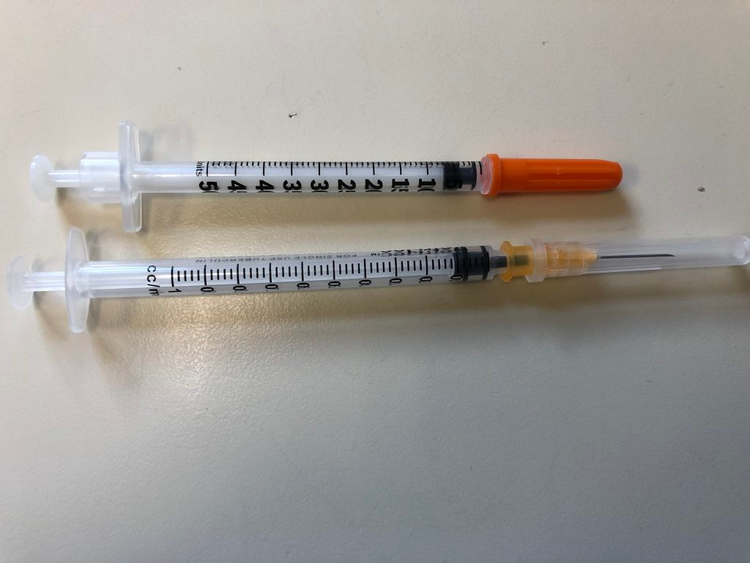
A U-100 insulin syringe (orange cap on top) and a 1 ml regular syringe (bottom).
How to Convert Insulin Units to Milliliters (ml) Using U-100 Insulin
Although matching insulin and syringes are ideal, on occasion, an owner will find themselves with insulin and syringes that don’t match. Below is a conversion chart to help those who need to convert units of insulin to ml. You will find the amount you need to use with the conversion next to it.
| To administer this amount of U-100 insulin |
Draw to this level in a 1 ml syringe |
| 1 unit | 0.01 mls |
| 2 units | 0.02 mls |
| 3 units | 0.03 mls |
| 4 units | 0.04 mls |
| 5 units | 0.05 mls |
| 6 units | 0.06 mls |
| 7 units | 0.07 mls |
| 8 units | 0.08 mls |
| 9 units | 0.09 mls |
| 10 units | 0.10 mls |
| 11 units | 0.11 mls |
| 12 units | 0.12 mls |
| 13 units | 0.13 mls |
| 14 units | 0.14 mls |
| 15 units | 0.15 mls |
| 16 units | 0.16 mls |
| 17 units | 0.17 mls |
| 18 units | 0.18 mls |
| 19 units | 0.19 mls |
| 20 units | 0.20 mls |
| 21 units | 0.21 mls |
| 22 units | 0.22 mls |
| 23 units | 0.23 mls |
| 24 units | 0.24 mls |
| 25 units | 0.25 mls |
| 26 units | 0.26 mls |
| 27 units | 0.27 mls |
| 28 units | 0.28 mls |
| 29 units | 0.29 mls |
| 30 units | 0.30 mls |
| 31 units | 0.31 mls |
| 32 units | 0.32 mls |
| 33 units | 0.33 mls |
| 34 units | 0.34 mls |
| 35 units | 0.35 mls |
| 36 units | 0.36 mls |
| 37 units | 0.37 mls |
| 38 units | 0.38 mls |
| 39 units | 0.39 mls |
| 40 units | 0.40 mls |
| 41 units | 0.41 mls |
| 42 units | 0.42 mls |
| 43 units | 0.43 mls |
| 44 units | 0.44 mls |
| 45 units | 0.45 mls |
| 46 units | 0.46 mls |
| 47 units | 0.47 mls |
| 48 units | 0.48 mls |
| 49 units | 0.49 mls |
| 50 units | 0.50 mls |
Insulin Conversion FAQ
Can I use a TB syringe for U-100 insulin?
Yes, but you must convert units to milliliters accurately—U-100 insulin has 100 units per mL, so use the formula: Units ÷ 100 = mL.
What’s the easiest way to convert insulin units to milliliters?
Simply divide the number of insulin units by 100 to get the equivalent volume in milliliters.
Why is the concentration of U-100 insulin important when measuring doses?
Because incorrect conversions can lead to under or overdosing. Knowing the concentration ensures safe and accurate dosing.
Can I use a U-40 syringe with U-100 insulin if I do the math?
It’s not recommended. Syringes are calibrated differently and using the wrong one can lead to dangerous dosing errors.
What does “U-100” actually mean?
“U-100” means there are 100 units of insulin in every 1 milliliter of fluid.